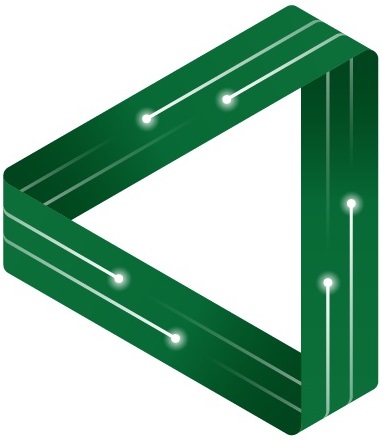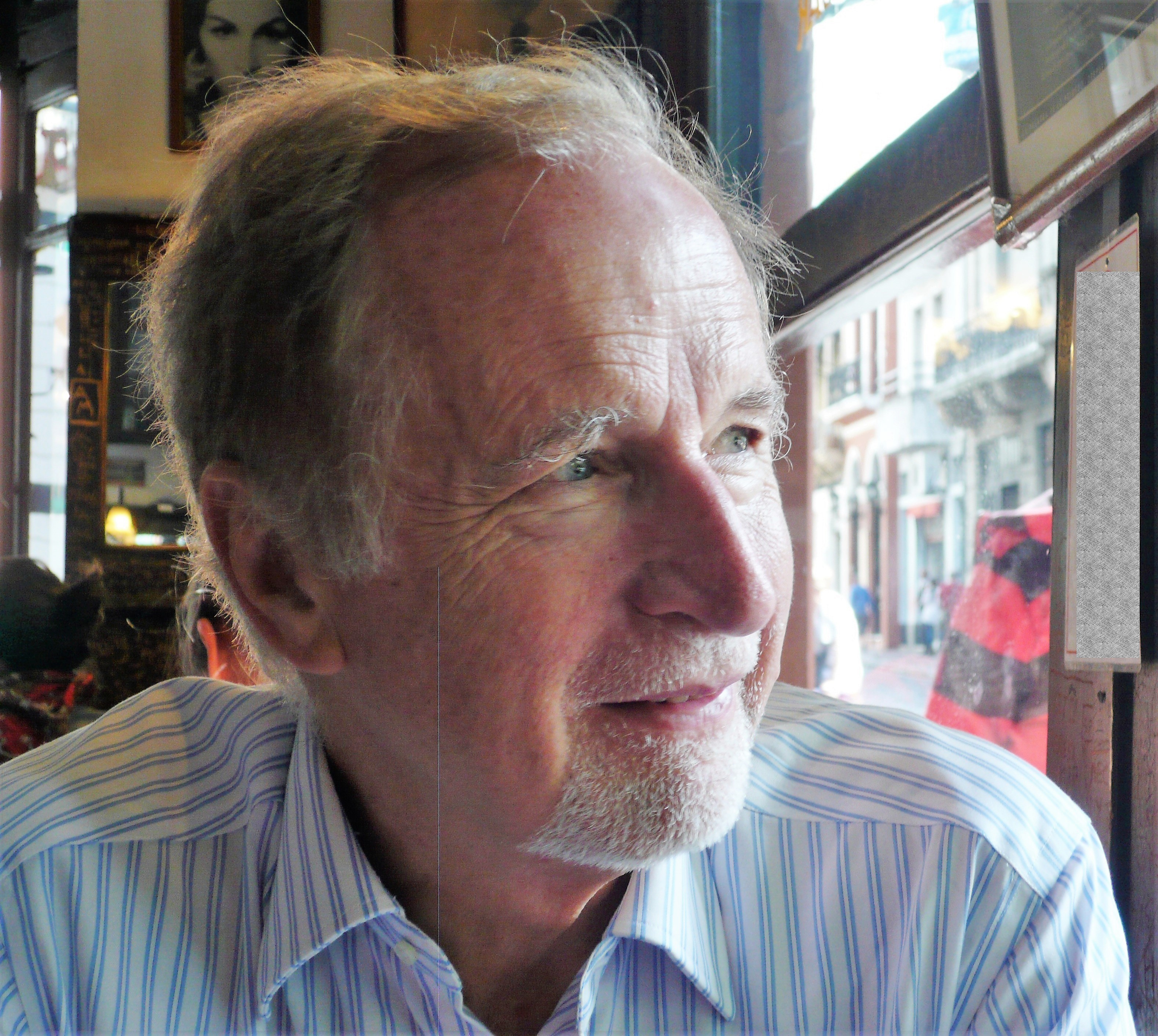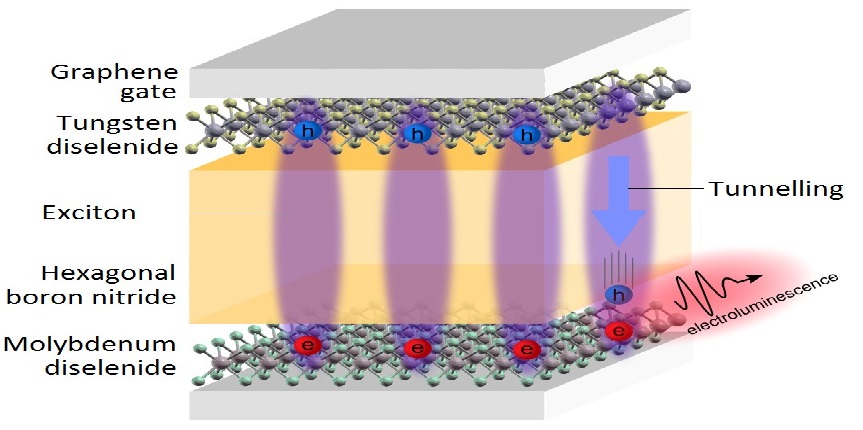David Neilson
B.Sc.(Hons) Melbourne, M.S., Ph.D. New York (Stony Brook)
Professor of Physics
University of Antwerp

Partner Investigator
Australian Research Council FLEET Centre of Excellence


|
David Neilson B.Sc.(Hons) Melbourne, M.S., Ph.D. New York (Stony Brook) Professor of Physics University of Antwerp  Partner Investigator Australian Research Council FLEET Centre of Excellence 
|
 |
David Neilson is
author of more than 150 refereed research articles, review
chapters in books, refereed conference reports and editor of
review books.

Superfluidity in graphene multilayers... A new
quantum phenomenon in bilayers of graphene predicted by David
Neilson and his co-workers has been observed.
In May 2018 Physical Review Letters published an article by a
University of Texas at Austin experimental group confirming a
theoretical prediction (Reference [25]) by David Neilson in
collaboration with Andrea Perali (University of Camerino) and
Alexander Hamilton (University of New South Wales, Sydney) that
in a system of double bilayer graphene, and more generally in
other semiconductors that can be made into atomically thin
flakes, quantum condensation and superfluid flow of
condensed pairs of electrons and holes should occur at
low electron densities. This is a state of matter
that had been searched for forty years, but not before
observed. Creation of this new quantum state in electronic
devices, opens up novel opportunities for quantum-technological
applications, to be developed in the Future Low Energy Electronic Transport (FLEET)
Centre of Excellence http://www.fleet.org.au/.

Supersolidity... is a counter-intuitive
quantum state in which a rigid lattice of particles flows
without resistance. It has not yet been unambiguously observed.
In Reference [1] David Neilson
and co-workers show that a supersolid ground state of excitons
in a double-layer semiconductor heterostructure should exist
over a wide range of readily attainable layer separations larger
than the separations typical in recent experiments.
This supersolid conforms with the original supersolid proposed
as a phase of Helium-4 by Geoffrey
Chester, a solid with one particle per supersolid
site. This makes it quite distinct from alternative
supersolid versions reported in cold-atom systems of a periodic
density modulation or clustering of the superfluid.
The new phase appears at layer separations much smaller than the
predicted exciton normal solid, and it persists up to a
solid--solid transition where the quantum phase coherence
collapses. The ranges of layer separations and
exciton densities for the supersolid are well within reach of
current experimental capabilities.
o
Short Bio
Born in Sydney, Australia, David Neilson completed
his primary and secondary schooling at Geelong Grammar
School, near Melbourne.
He studied Physics and Mathematics at the University of
Melbourne, graduating with a B.Sc. with First Class
Honours in 1968 under the supervision of Geoffrey Opat.
He went to New York as a Fulbright scholar in 1969 and completed
an M.S. degree in High Energy Particle Physics and Field Theory
under the supervision of Ben Lee at the State University of
New York (Stony Brook) in 1971.
He switched his research to Condensed Matter Physics, working
with Gerald E. Brown jointly at Stony Brook and the Niels
Bohr Institute in Copenhagen.
His doctoral project was on the Many Body Problem for the
strongly interacting quantum system of electrons in solids.
Obtaining his Ph.D. in 1974 he took an N.S.F. research
Fellowship at Northwestern University in Chicago working
with Chia-Wei Woo on the quantum solidification of Helium and on
the possibility of the solidification of nuclear matter under
the intense pressures found in neutron stars.
In 1975 he took
up a position of Assistant Professor at the University of
Southern California in Los Angeles.
In 1978 he moved to the University of New South Wales in
Sydney as Senior Lecturer (Assistant Professor).
From 1985-1994 he was Associate Professor, and from 1995 until
2003 Professor of Physics at New South Wales.
He maintains his ties with New South Wales as an Adjunct
Professor.
He has held visiting positions at the Niels Bohr Institute,
(NORDITA Fellow), the Max Planck Institute, Stuttgart
(Research Scientist),
Nottingham University (S.E.R.C. Visiting Fellow), the International
Centre
for Theoretical Physics, Trieste, Italy (Research
Director),
Université de Paris VI (Visiting Fellow), and the Scuola
Normale Superiore, Pisa (Visiting Professor).
From 2005 to 2017
he was chiara fama Professor in Italy at the historic (founded
1336) University of Camerino and
Research Associate with the National Enterprise for NanoScience
and NanoTechnology (NEST) Centre at the Scuola Normale
Superiore in Pisa.
Since 2018 David Neilson has been Professor of Physics at the University of Antwerp.
He is a Partner Investigator of the Australian Research Council
Centre of Excellence "Future Low Energy Electronic Transport"
(FLEET) http://www.fleet.org.au/.
Research Interests
David Neilson has wide
experience in the field of semiconductor theory and has
studied exotic quantum phases of one- and two-dimensional
systems found in semiconductor devices.
His recent work has been on superfluidity in graphene bilayer
and double transition metal dichalcogenides (TMD) monolayer
devices.

The recently experimentally confirmed prediction of superfluidity (Reference [25]) has attracted 200 citations.
In a superfluid, scattering is prohibited by
quantum statistics, which means that bound neutral pairs electrons
and holes (called excitons) can flow without heat-wasting
resistance in new device structures of atomically thin
semiconductors. Immediate application is for devices in the
computing industry. These
already use 8% of all electricity, a figure that is doubling every
10 years. The task is
to develop new types of electronic conduction without resistance
in solid-state systems at room temperature. This would form
the basis of a new type of switching devices (transistors) with
vastly lower energy consumption per computation than silicon CMOS
devices.
David Neilson with his coworkers have also
predicted new states of matter for electrons in coupled bilayers in the form of a
coupled electron crystalline solid or a charge density waves.
Reference [65] with 170 citations, has stimulated a large number
of follow-up studies of bi-layers in zero magnetic field. The
predictions that a coupled crystal does form at relatively high
densities were confirmed in numerical simulation studies.
There has been a CECAM (France) conference devoted to coupled
bi-layers in zero magnetic field resulting from the predicions in
Reference [65].
He developed comprehensive diagrammatic
many-body calculations incorporating functional conserving
techniques for conduction electrons.
He developed a quantum generalization of the classical glass
equations with applications to conduction electrons, extended it
to include impurities in interacting electron 2D layers, and
showed that this could lead to a transition to a solid electron
glass state.
He has worked on ground state, localization and transport
properties in disordered electron 2D systems.
He has studied the effect of strong correlations between electron
spins in electron systems at low density.
He has studied the decisive effect that impurities have on
the ground state of interacting electrons in quasi one-dimensional
quantum wires.
Before taking up his chiara fama Chair in Italy, he had had
continuous funding as Chief Investigator of Major Research Grants
from the Australian Research Council for an uninterrupted period
of 25 years.
Scholarly Activities
President of the
International Conference series Strongly Coupled Coulomb
Systems 2016-
Past-President of the International Conference series
International Conferences on Recent Progress in Many Body
Theories 2014-2020.
Organiser of
international conferences including :
Multi-Condensate Superconductors and Superfluids in Solids and
Ultracold Gases, Camerino 2014,
International Conference on Strongly Coupled Coulomb Systems,
Camerino 2008,
International Conference on Novel Quantum Systems Italy 2005,
International Conference on Soft Condensed Matter, Sydney 2003,
International Workshop on Condensed Matter Theories Canberra
2002,
Australian Institute of Physics Biennial Congress, Sydney 2002.
Chair of Program
Committee for International Conferences on Strongly Coupled
Coulomb Systems, Camerino 2008, Budapest 2011, Santa Fe 2014,
Kiel 2017.
Chair of Eugene
Feenberg Memorial Medal Committee for RPMBT-16 Bariloche 2011
and RPMBT-21 Chapel Hill North Carolina 2022.
International
Advisory Committees for Conferences including
International Conferences on Recent Progress in Many Body
Theories,
International Workshops on Condensed Matter Theories, and
International Conferences on Strongly Coupled Coulomb Systems
Convenor of the
Annual Gordon Godfrey Workshops on Condensed Matter Physics,
Sydney for fifteen years.
Referee for
international physics journals, including Physical Review
Letters, Physical Review, Scientific Reports, Physics Letters,
Journal of Physics, Solid State Communications.
Examiner for
external PhD theses.
Reviewer of grant applications for Research Council organisations in Australia (A.R.C.) Belgium, Canada (N.S.E.R.C.), U.K. (S.E.R.C.), U.S.A. (N.S.F. and D.O.E.).
Fellow of the Australian Institute of
Physics, member of the American Physical Society
and the Institute of Physics (U.K.).
Selected Publications
Representative examples of David Neilson's
150 publications
Excitonic superfluidity in electron-hole bilayer systems, David Neilson, in Encyclopedia of Condensed Matter Physics, 2nd edition, ed. Tapash Chakraborty, (Elsevier, Oxford, 2023)
Effect of Mismatched Electron-Hole Effective Masses on Superfluidity in Double Layer Solid-State Systems, Sara Conti, Andrea Perali, Francois M. Peeters, and David Neilson, Condens. Matter 6, 14 (2021)
Transition Metal Dichalcogenides as Strategy for High
Temperature Electron-Hole Superfluidity, A doping-dependent
switch from one- to two-component superfluidity at
temperature above 100K in coupled electron-hole
Van der Waals
heterostructures, S. Conti, M. Van der Donck, A. Perali, F.
M. Peeters, and D. Neilson, Phys. Rev. B Rapid Comm. 101,
220504(R) (2020)
Experimental conditions for observation of electron-hole
superfluidity in GaAs heterostructures, Samira Saberi-Pouya,
Sara Conti, Andrea Perali, Andrew F. Croxall, Alexander R.
Hamilton, Francois M. Peeters, and David
Neilson,
Phys. Rev. B Rapid Comm. 101, 140501(R) (2020)
Two-dimensional semiconductors host
high-temperature exotic state, A. Chaves and D. Neilson, Nature 574, 39
(2019)
Coulomb drag in strongly coupled quantum wells: temperature dependence of the many-body correlations, M. Zarenia, S. Conti, F. M. Peeters, and D. Neilson, Appl. Phys. Lett. 115, 202105 (2019)
Multicomponent screening and superfluidity in
gapped electron-hole double bilayer graphene with realistic
bands, S. Conti,
A. Perali, F. M. Peeters, and D. Neilson, Phys. Rev. B 99, 144517 (2019)
Electric-field-induced emergent electrical
conductivity in graphene oxide, M. Neek-Amal, R. Rashidi, Rahul R. Nair, D.
Neilson, and F. M. Peeters, Phys. Rev. B 99, 115425 (2019)
Correlation functions in electron-electron and
electron-hole double quantum wells: Temperature, density,
and barrier-width dependence, M. W. C. Dharma-wardana, D. Neilson, and F.
M. Peeters, Phys. Rev. B 99, 035303 (2019)
Multiband Mechanism for the Sign Reversal of
Coulomb Drag Observed in Double Bilayer Graphene
Heterostructures, M.
Zarenia, A. R. Hamilton, F. M. Peeters, and D. Neilson, Phys.
Rev. Lett. 121, 036601 (2018)
Evidence from quantum Monte Carlo of large gap
superfluidity and BCS-BEC crossover in double
electron-holelayers, Pablo Lo'pez Ri'os, Andrea Perali,
Richard J. Needs, and David Neilson, Phys. Rev. Lett. 120,
17701 (2018)
Multicomponent Electron-Hole Superfluidity and
the BCS-BEC Crossover in Double Bilayer Graphene, S.
Conti,A. Perali, F. M. Peeters, and D. Neilson, Phys. Rev.
Lett. 119, 257002 (2017)
Inhomogeneous phases in coupled electron-hole
bilayer graphene sheets: Charge Density Waves and
CoupledWigner Crystals, M. Zarenia, D. Neilson, and F. M.
Peeters, Sci. Reports 7, 11510 (2017)
Wigner crystallization in transition metal
dichalcogenides: A new approach to correlation energy,
M.Zarenia, D. Neilson, B. Partoens, and F. M. Peeters, Phys.
Rev. B 95, 115438 (2017)
Tuning the BEC-BCS crossover in electron-hole double bilayer graphene superfluidity using multiband effects, Sara Conti, Andrea Perali, David Neilson, and Francois Peeters, Belgian Phys. Soc. Journal 3, 6 (2017)
Large gap electron-hole superfluidity and shape
resonances in coupled graphene nanoribbons, M. Zarenia, A.
Perali, F. M. Peeters, and D. Neilson, Sci. Reports 6, 24860
(2016)
Many-body electron correlations in graphene,
David Neilson, Andrea Perali, and Mohammad Zarenia, J.
Phys.: Conf. Series 702, 012008 (2016)
Using magnetic stripes to stabilize
superfluidity in electron-hole double monolayer graphene,
LucaDell'Anna, Andrea Perali, Lucian Covaci, and David
Neilson, Phys. Rev. B, Rapid Comm. 92, 220502(R) (2015)
Enhancement of electron-hole superfluidity in
double few-layer graphene, M. Zarenia, A. Perali, D.
Neilson, and F. M. Peeters, Sci. Reports 4, 7319 (2014)
Excitonic superfluidity and screening in
electron-hole bilayer systems, D. Neilson, A. Perali and A.
R. Hamilton,Phys. Rev. B Rapid Comm. 89, 060502(R) (2014)
Quantum Glass Transition at Finite Temperature
in Two-Dimensional Electron Layers, David Neilson, Alexander
R. Hamilton and Jagdish S Thakur, Int. J. Mod Phys. B 27,
1347004 (2013)
Proceedings of the International Conference on
Strongly Coupled Coulomb Systems 2011, Budapest, Hungary,
Zolt'an Donk'o, Peter Hartmann and David Neilson (eds.) ,
Contrib. Plasma Physics 52, 6 (2012)
Dissipative processes in low density strongly
interacting 2D electron systems, D. Neilson, chapter 9 in
bookCondensed Matter Theories Vol. 25, ed. Eduardo V Ludena,
Raymond F Bishop and Peter Iza, (World Scientific,
Singapore, 2011)
Anomalous transport in mesoscopic inhomogeneous
two-dimensional electron systems at low temperature,D.
Neilson and A.R. Hamilton, Phys. Rev. B15 82, 035310 (2010)
Dissipative processes in low density strongly
interacting 2D electron systems, D. Neilson, Int. J. Mod.
Phys. B 24, 4946-4960(2010)
Metal-insulator transition in 2D as a quantum
phase transition, D.J.W. Geldart and D. Neilson, J. Phys. A
42, 214011 (2009)
Quantum tunnelling and hopping between metallic
domains in disordered two-dimensional mesoscopic electron
systems, D.Neilson and A.R. Hamilton, J. Phys. A 42, 214012
(2009)
Tunneling and Hopping Between Domains in the
Metal-Insulator Transition in Two- Dimensions, David Neilson
and Alex Hamilton,Int. J. Mod. Phys. 22, 4565 - 4571 (2008)
Special issue on new developments in strongly
coupled Coulomb systems, David Neilson and Gaetano Senatore,
J. Phys. A Math.Theor. 42, 210301 (2009)
Quantum critical point description of the 2D
metal insulator transition, D.J.W. Geldart and D. Neilson,
Physica E: Low-dimensional Systems and Nanostructures, 40,
1182 (2008)
Metal-Insulator Phenomena in 2D: A Unified
Scaling Picture, D. Neilson and D.J.W. Geldart, chapter 11
in book, CondensedMatter Theories Vol. 21, edited by
Hisazumi Akai, Hiroshi Toki and F. Bary Malik (Nova, New
York 2007)
Quantum critical behavior in insulating region
of the 2D metal insulator transition, D.J.W. Geldart and D.
Neilson, Phys. Rev.B15 76, 193304 (2007)
Electron Gas In High-Field Nanoscopic
Transport: Metallic Carbon Nanotubes, F. Green and D.
Neilson, Int. J. Mod.Physics B 21, 2181 - 2190 (2007)
Temperature dependent resistivity in the low
resistance region for diffusive transport in two-dimensions,
D.J.W. Geldart andD. Neilson, Phys. Rev. B 70, 235336 (2004)
Two-component scaling near the metal-insulator
bifurcation in two dimensions, D.J.W. Geldart and D.
Neilson, Phys. Rev. B 67, 205309 (2003)
Density dependence of critical magnetic fields
at the metal-insulator bifurcation in two dimensions, D.J.W.
Geldart and D.Neilson, Phys. Rev. B 67, 045310 (2003)
Characterizing the metal-insulator transitions
in 2D, D. Neilson, J.S. Thakur and E. Tosatti, Aust. J.
Phys. 53, 531 (2000)
The effect of spin alignment on the
metal-insulator transition in two-dimensional systems, J.S.
Thakur and D. Neilson, J. Phys. Cond. Matt. 12, 4483 (2000)
Phase diagram of the metal-insulator transition
in two-dimensional electronic systems, J.S. Thakur and D.
Neilson,Phys. Rev. B Rapid Comm. 59, R5280 (1999)
Metal-insulator transition in a disordered 2D
electron gas including temperature effects, J.S. Thakur,
Lerwen Liu and D.Neilson, Phys. Rev. B 59, R7255-7258 (1999)
Superconductivity in a correlated disordered
two-dimensional electron gas, J.S. Thakur and D.
Neilson, Phys. Rev. B 58, 13717-13720 (1998)
Finite Temperature Correlations on Plasmon and
Coulomb Drag in Coupled Quantum Wells, Lerwen Liu, D.
Neilson and L.Swierkowski, Physica B 249-251, 937-940 (1998)
Exciton and Charge Density Wave Formation in
Spatially Separated Electron Hole Liquids, Lerwen Liu, L.
Swierkowski and D.Neilson, Physica B 249-251, 594-597 (1998)
Superconducting pairing in coupled
electron-hole layers, J.S. Thakur, D. Neilson and M.P. Das,
Phys. Rev. B 57,1801-1804, (1998)
Freezing of Strongly correlated Electrons in
Bilayer Systems with Weak Disorder, J.S. Thakur and D.
Neilson, Prog. Theor.Phys. 126, 339 (1997)
Electron correlations in thin disordered
quantum wires, J.S. Thakur and D. Neilson, Phys. Rev. B 56,
4679 (1997)
Coupled electron and hole quantum wires, J.S.
Thakur and D. Neilson, Phys. Rev. B 56, 4671 (1997)
Electron correlations and disorder on mobility
and localization in quasi one-dimensional wires, J.S.
Thakur and D. Neilson, Phys. Rev. B 56, 7485 (1997)
Freezing of strongly correlated electrons in
bilayer systems with weak disorder, J.S. Thakur and D.
Neilson, Phys. Rev. B56, 10297-10302 (1997)
Frozen electron solid in the presence of small
concentrations of defects, J.S. Thakur and D. Neilson, Phys.
Rev. B 54,7674-7677 (1996)
Static and dynamic properties of coupled
electron-electron and electron-hole layers, Lerwen Liu, L.
Swierkowski, D.Neilson and J. Szymanski, Phys. Rev. B 53,
7923-7931 (1996)
Excitations of the strongly correlated electron
liquid in coupled layers, (with L. Swierkowski, J. Szymanski
and L. Liu), Phys. Rev. Lett. 71, 4035 - 4038 (1993)
Spin correlations in the low density electron
system, (with F. Green, L.Swierkowski, J. Szymanski and
D.J.W.Geldart), Phys. Rev. B 47, 4187 -
4192 (1993)
Electron Liquids in Coupled Quantum Wells,
(with L. Swierkowski and J. Szymanski), Acta Phys.
Pol. 43, (1993)
Nonlocal exchange contribution to the Free Energy of inhomogeneous many-Fermion systems. III. Numerical study for screened Coulomb interaction, (with M.R.A. Shegelski, D.J.W. Geldart and M.L. Glasser), Can. J. Phys. 72, (1993)
Collective modes in the two-dimensional
electron liquid near the Wigner phase transition, (with L.
Swierkowski, J. Szymanski and L. Liu) J. Low
Temp. Phys. 89, 251 - 256 (1992)
Positron Surface Sticking Rates, (with
A.B. Walker, J. Szymanski and K.O. Jensen), Phys. Rev.
A 46, 1687 - 1696 (1992)
Dynamical Theory for Strongly Correlated Two
Dimensional Electron Systems, (with A. Sjolander, L.
Swierkowski and J. Szymanski), Phys. Rev.
B 44, 6291 - 6305 (1991)
Adsorption of Zinc on Cadmium Telluride and
Mercury Telluride Surfaces, (with K.A.I.L. Wijewardena
J. Szymanski), Phys. Rev. B 44, 6344 - 6350 (1991)
New Quantum Interference Effect in Rotating
Systems, (with C. H. Tsai), Phys. Rev. A
37, 619--621 (1988)
Angular Distribution of Positrons Emitted from
Metal Surfaces, (with R.M. Nieminen and J. Szymanski),
Phys. Rev B 38, 11131-11134 (1988)
Surface Barrier Effects in Low Energy Positron
Diffraction, (with P.J. Jennings), Solid
State Comm. 65, 649--652 (1988)
Energy Loss Mechanism for Hot Electrons in
GaAs, (with D.X. Lu and J. Szymanski), J. de
Physique 48, 263--266 (1987)
Electron and Hole Self Energy Contributions to
the Dynamic Structure Factor in Interacting Electron
Systems, (with F. Green and J. Szymanski), Phys. Rev.
B 35, 124 - 132 (1987)
Multipair Excitations and Sum Rules in
Interacting Electron Systems, (with F. Green, D. Pines
and J. Szymanski), Phys. Rev. B 35,
133--144 (1987)
Adsorption on Narrow Gap Semiconductors,
(with H.J. Kreuzer and J.Szymanski), Phys. Rev.
A 36, 3294 - 3303 (1987)
Phonon Emission by a Hot Two Dimensional
Electron Gas in a Quantizing Magnetic Field (with G.A.
Toombs, F.W. Sheard and L.J. Challis), Sol. State
Comm. 64, 577 - 581 (1987)
Emission of Thermal Positrons from Metal
Surfaces, (with R.M. Nieminen and J.
Szymanski), Phys. Rev. A 33, 1567 - 1571 (1986)
Dynamical Theory of Binary Ionic
Mixtures, (with K.I. Golden and F.Green), Phys.
Rev. A, Rapid Comm. 31, 3529 3532 (1985)
Functional Dependence of Electron Mobility
on Distance of Remote Donor Impurities from the
Interface in AlGaAs/GaAs Heterostructures, (with J.
Szymanski, F. Green, P.G. Kemeny and B.J.
Linard), App. Surf. Sci. 22, 992--996 (1985)
First Principles Calculation of the Dynamic
Structure Factor for the Electron Gas in Metallic
Systems, (with F. Green and J. Szymanski), Phys. Rev.
B 31, 5837 - 5840 (1985)
Nonlinear Response Function Approach to Binary
Ionic Mixtures: Dynamical Theory, (with K.I. Golden
and F. Green), Phys. Rev. A 32, 1669 - 1692 (1985)
Bound Electron States of Coulombic Impurities
and their Effect on Mobility in Inversion Layers,
(with F. Green and J. Szymanski), Surf. Sci. 142, 279
- 283 (1984)
A Conserving Dynamic Theory for the Electron
Gas, (with F. Green and J. Szymanski), Phys. Rev
B 31, 2779 - 2795 (1985)
The Dynamic Structure Factor for the Electron
Gas in Metallic Systems, (with F. Green and J.
Szymanski), Phys. Rev B 31, 2796 - 2815 (1985)
Momentum Dependent Annihilation Rate for
Positrons in Metals, Phys. Rev. B 26, 60 - 65 (1982)
Direct Evidence for Dynamic Electron Electron
Correlations in Metals, (with F. Green and J.
Szymanski), Phys. Rev. Lett. 48, 638--641 (1982)
Photodesorption of Diatomic Molecules by Laser
- Molecular Vibrational Coupling, (with H.J. Kreuzer),
Chem. Phys. Letters 78, 50 -53 (1981)
Rate Equations for Positronium Formation at
Metal Surfaces, (with H.J. Kreuzer and Z.W.
Gortel), Solid State Comm. 35, 781 -784 (1981)
On the Validity of a Hydrodynamic Description
of Laser - Driven Fusion, (with H.J. Kreuzer),
J. Plasma Physics 23, 357 -381 (1981)
Study of the Electronic Structure of Model
(110) Surfaces and Interfaces of Semi-Infinite III-V
CompoundSemiconductors: The GaSb--InAs System,
(with N.V. Dandekar and A. Madhukar), Phys. Rev.
B 21, 5687 - 5705 (1980)
Enhancement of Positron Annihilation with Core
Electrons in Solids, (with E. Bonderup and J.U.
Andersen), Phys. Rev. B 20, 883 -899 (1979)
Study of Interface Electronic Structure of a
Model Metal-Semiconductor Interface, (with A.
Madhukar), Phys. Rev. B 17, 3832 -3843 (1978)
Solidification of Helium-4 Monolayer, (with
M.A. Lee and C.W. Woo), Phys. Rev. B 14, 4874 - 4882
(1976)
New Variational Treatment of the Ground State
of Solid Helium, (with C.W. Woo), Phys. Rev. B 13,
3790 - 3798 (1976)
Theory of Quantum Crystals, (with
C.W. Woo), Phys. Lett. 56A, 402 - 404 (1976)
Caging and the Solidification of Neutron Star
Matter, (with C.W. Woo), Phys. Rev.
D 13, 3201 - 3207 (1976)
Electron Correlations at Metallic Densities, (with G.E. Brown), Phys. Rev. B 12, 2138 - 2149 (1975)
Positron Annihilation and Electron Correlations in Metals, (with A.D. Jackson), Phys. Rev. B 12, 1689 - 1706 (1975)
Single-Electron
Energies, Many Electron Effects, and the Renormalized Atom
Scheme as Applied to Rare-Earth Metals, (with J.F. Herbst
and R.E. Watson), Phys. Rev. B 6, 1913 - 1924 (1972)
Fac.
Wetenschappen - Dept. Fysica
UNIVERSITEIT ANTWERPEN
Groenenborgerlaan 171
2020 Antwerpen Belgium
Email. dneilson
[at] ftml.net
Tel. +32 3 265 35 26
Mob. +32 485 27 88 58
WhatsApp/Signal +39 320 438 1336
Skype david.neilson
---